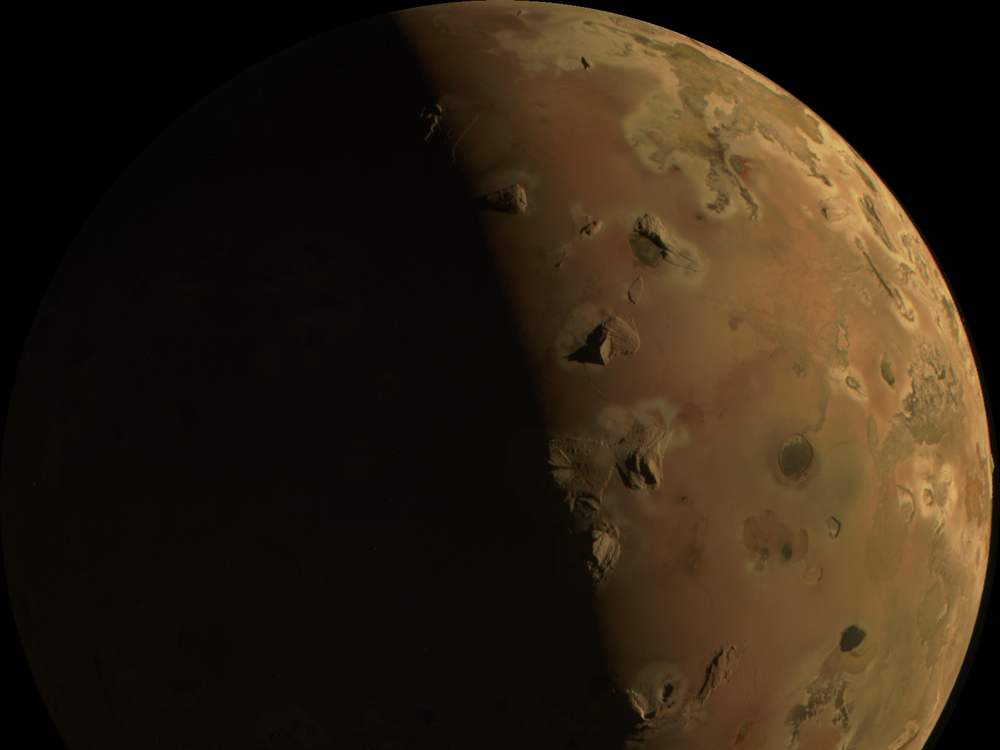Section Branding
Header Content
Take a look at these astonishing new images of Jupiter's volcanic moon Io
Primary Content
There are new, high-quality images of Jupiter's moon, Io, thanks to the nearest flyby of the celestial body by a spacecraft in decades.
NASA released images Saturday taken by the Juno spacecraft, which had been slated to fly roughly 930 miles from the surface of Io, the agency said.
The photos of a silhouetted, dusty red sphere pockmarked by massive grayish volcanoes prompted awe online among astronomers and other stargazers, some of whom called the images "magnificent" and "beautiful."
The photos were captured by the JunoCam imager, a public engagement tool that's capable of taking visible-light color images, and which NASA says has been weakened by the effects of radiation during the course of its mission.
Since 2016, Juno has been exploring Jupiter and its surroundings, including Io, which is the most volcanic world in the solar system.
NASA investigators hope to use information gleaned from the flyby as well as past observations to learn more about the tempestuous moon's volcanoes.
"We are looking for how often they erupt, how bright and hot they are, how the shape of the lava flow changes, and how Io's activity is connected to the flow of charged particles in Jupiter's magnetosphere," Juno's principal investigator Scott Bolton said in a statement.
The agency has scheduled another close flyby of Io for Feb. 3, when Juno is again expected to pass at about the same distance from the moon's surface as it did Saturday.
Juno's mission is set to end in late 2025.
NASA said Juno's transit past Io over the weekend was the nearest flyby since a similar flight by the agency's Galileo spacecraft in 2001, which came within about 112 miles of the volcanic moon.
Copyright 2023 NPR. To see more, visit https://www.npr.org.

